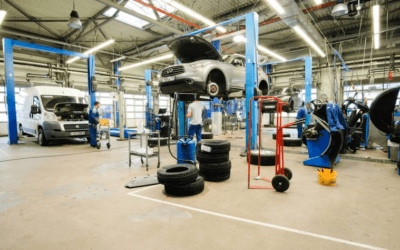Restaurant Automation and Service Quality

Restaurant automation refers to the technology and processes implemented to streamline operations, enhance efficiency, and improve service quality. By leveraging automated systems, restaurants can optimize various aspects of their operations, from order processing to inventory management. Here’s a comprehensive overview of restaurant automation and its impact on service quality.
1. Types of Restaurant Automation
- Point of Sale (POS) Systems:
- Automates order taking, payment processing, and sales reporting.
- Provides real-time data on sales trends, inventory levels, and customer preferences.
- Kitchen Display Systems (KDS):
- Replaces traditional paper tickets with digital screens in the kitchen.
- Displays real-time orders, allowing kitchen staff to prioritize and manage workflow effectively.
- Online Ordering and Delivery Platforms:
- Allows customers to place orders via websites or mobile apps.
- Automates order processing, payment, and delivery scheduling.
- Inventory Management Systems:
- Monitors stock levels, tracks usage, and automates reordering processes.
- Reduces waste and ensures that popular items are always in stock.
- Customer Relationship Management (CRM) Tools:
- Collects and analyzes customer data to improve service and marketing efforts.
- Automates loyalty programs, feedback collection, and targeted promotions.
- Employee Scheduling Software:
- Automates staff scheduling based on peak times and employee availability.
- Reduces scheduling conflicts and optimizes labor costs.
2. Benefits of Restaurant Automation
- Increased Efficiency:
- Streamlines operations, reducing the time required for order processing and service delivery.
- Minimizes human error, leading to faster and more accurate service.
- Enhanced Customer Experience:
- Automation allows for quicker service, reducing wait times and improving overall satisfaction.
- Self-service kiosks and online ordering provide customers with flexibility and convenience.
- Data-Driven Insights:
- Automated systems collect valuable data that can be analyzed for better decision-making.
- Insights into customer preferences and sales trends inform menu adjustments and marketing strategies.
- Cost Reduction:
- Automation can reduce labor costs by optimizing staff schedules and improving operational efficiency.
- Minimizes food waste through better inventory management.
- Consistency in Service:
- Automation ensures that orders are processed uniformly, maintaining a consistent quality of service and food preparation.
3. Impact on Service Quality
- Faster Service:
- Automated systems speed up order taking, kitchen processing, and payment, leading to quicker service times.
- Improved Accuracy:
- Reduces misunderstandings and errors in orders, enhancing the overall customer experience.
- Personalized Service:
- Data collected through automated systems allows restaurants to tailor their offerings to individual customer preferences, fostering loyalty.
- Better Communication:
- Automated systems facilitate clear communication between front-of-house and back-of-house staff, ensuring that orders are fulfilled accurately and promptly.
- Higher Customer Satisfaction:
- With faster, more accurate service and personalized experiences, customer satisfaction levels tend to rise, leading to positive reviews and repeat business.
4. Implementation Considerations
- Choosing the Right Technology:
- Research and select automated systems that fit the specific needs of your restaurant.
- Staff Training:
- Provide comprehensive training for staff on how to use new technologies effectively, ensuring a smooth transition.
- Customer Education:
- Inform customers about new automated options (e.g., kiosks or online ordering) and how to use them to enhance their dining experience.
- Continuous Improvement:
- Regularly evaluate the effectiveness of automated systems and make adjustments as needed to improve service quality.
Conclusion
Restaurant automation plays a crucial role in enhancing service quality by increasing efficiency, improving accuracy, and providing valuable insights into customer preferences. By implementing automated systems, restaurants can create a more streamlined operation that ultimately leads to higher customer satisfaction and loyalty. Embracing automation is not just about keeping up with technology; it’s about enhancing the overall dining experience and positioning the restaurant for future success.
Thank you.. If you like please donate 🙂



